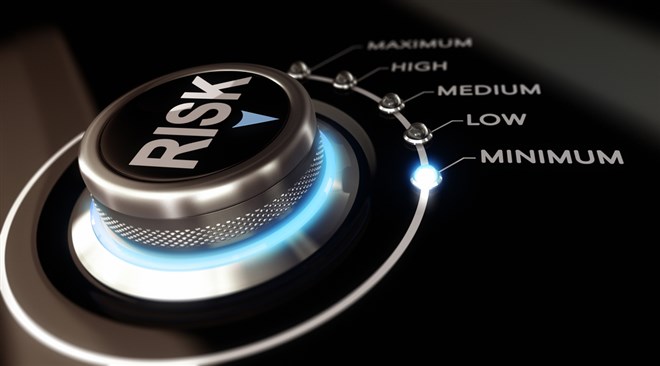
When the market suffers a downturn, it can be a good time to bunker down with low beta stocks. Why is that?
By definition, stocks that are less sensitive to big market swings fare better in bear markets. The reverse is true in bull markets when low beta names tend to lag market returns.
Granted, companies with betas less than 1.0 won’t necessarily go up when the market heads south, but they are less likely to go down. This translates to principal preservation, meaning an investment account can hang onto more of its value in hopes of better days.
‘Low beta’ and ‘defensive’ are often interchangeable terms used to describe stocks that help weather economic storms. However, not all defensive stocks have low betas and not all low beta stocks are defensive. For instance, there are several examples of low beta S&P 500 stocks that are in the technology and consumer cyclical sectors.
So when turbulence strikes, low beta companies in non-cyclical sectors are often the best way to go. That’s because consumers continue to buy food, cleaning supplies, and personal care products even as budgets are strained. Let’s look at three examples.
Will Procter & Gamble Stock Rebound?
The Procter & Gamble Company (NYSE: PG) has a 0.35 beta, among the lowest in the S&P. It also resides in the very defensive household & personal products space as the company behind Tide, Crest, Charmin, Pampers, Gillette, and other popular consumer brands.
Not even a company like P&G is immune to inflation, however, as we learned from its latest quarterly report. Earnings were up 7% year-over-year but higher commodity, packaging, and freight costs weighed on margins. These headwinds caused management to forecast 0% to 4% bottom line growth in FY23—and an unusually large dip in the stock.
Over time though, the law of averages should kick in and much smaller daily moves should line up for a longer term uptrend. To combat cost inflation and foreign exchange impacts, P&G is raising prices with little impact on consumer purchase behavior. In fiscal Q4, prices increased by 8% and volumes barely budged—precisely what you’d want to see out of a defensive investment.
Yes, P&G is doing only slightly better than the S&P year-to-date. But with the economy on the brink of a potentially lengthy recession at the hands of an inflation battle, a rebound is inevitable. The last time the stock suffered a down year (2015), as it is poised to do this year, it ran higher in each of the next six years.
Why is Kroger Stock Outperforming?
The Kroger Co. (NYSE: KR) has a 0.47 beta—meaning on average, when the market goes down 1%, it historically goes down roughly half that. This year has been a different story for the grocery store operator. It has found ways to thrive in a shaky macro environment and the stock is up 7%. Sometimes even defensive names go on offense.
Kroger is outperforming because it has adjusted better than peers to how consumers are shopping. Investments in e-commerce have made it one of the most tech-forward grocers and today’s convenience-minded consumers have taken notice.
A tie-up with Instacart for Kroger Delivery Now is bringing food and other essentials straight to American homes within 30 minutes. Automated fulfillment centers are being opened with Ocado along with regular fulfillment centers around the country to keep up with online order growth. A pilot delivery program with Drone Express could lead to yet another techy growth avenue. Meanwhile, in-store technologies like Kroger Pay and Bag & Go are appealing to customers’ lasting contactless payment preference.
As Kroger has evolved into the supermarket of the future, the financial results have followed. In FY22, it grew on top of the explosive performance of fiscal 2021. Growth is on pace to accelerate in fiscal 2023. A well-timed push into higher margin, private label goods is helping offset wage, freight, and other cost pressures. Now trading 23% below its April 2022 peak, it may be a good time to stock up on Kroger shares.
Is Kraft Heinz a Low Risk Stock?
Since Maxwell House coffee, Oscar Mayer bologna, and Philadelphia cream cheese have loyal brand followings, The Kraft Heinz Company (NASDAQ: KHC) benefits from relatively steady demand throughout the ups and downs of the economic cycle. In turn, its stock has a 0.70 beta that makes it a conservative way to participate in the equity markets.
This year, Kraft Heinz shares are up about 4% while the S&P is down 18%. The Warren Buffet-backed company recorded 8.5% organic sales growth in the first half of the year, using price increases to offset slightly lower volumes and an unfavorable mix.
A strong portfolio of brands is paramount in being able to raise prices in an environment where shoppers are becoming more selective about what they are willing to pay up for. Oftentimes most consumers have a tipping point where they switch to less expensive generic brands. Thus far most have stood by their Kraft Heinz staples.
A big component of Kraft Heinz’s growth strategy is to selectively expand overseas. Recent buyouts like Hemmer’s and BR Spices in Brazil, Just Spices in Germany, and Assan Foods in Turkey should continue to spice up international growth.











